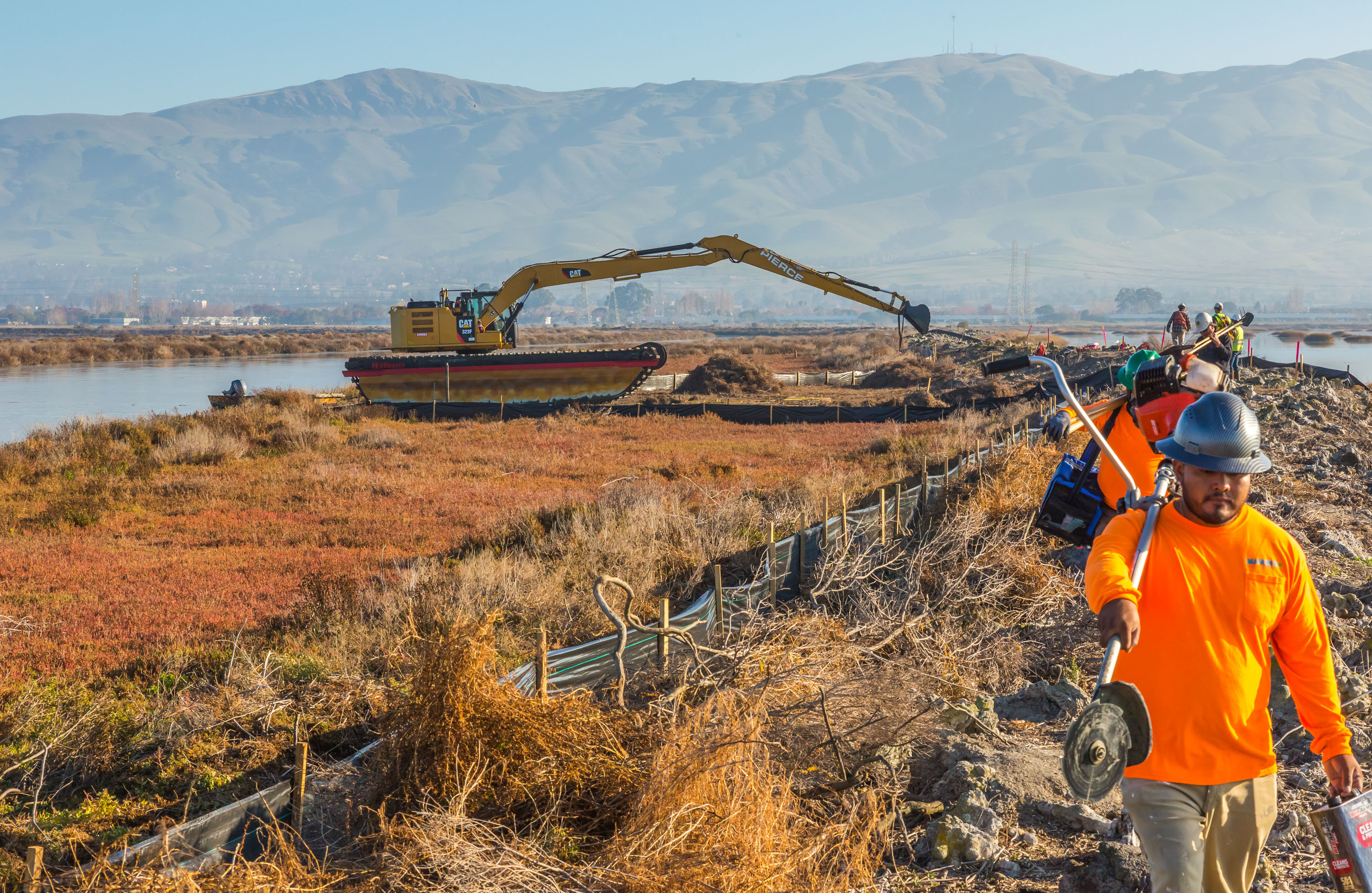Construction!!!
Did you ever have one of those sneezes that takes a long time to happen?
You know the ones…you think they are going to happen, and you pause in whatever you are doing to let it happen, but it backs off a bit and waits but doesn’t actually fade, so you kind of start back to talking, but then it kind of bubbles back up and so you pause again and maybe even hold up your finger to tell someone, “Wait…hang on…I’m gonna sneeze…” and then you don’t – at least not right away – so you get back to it, and then the sneeze comes in, guns-a-blazin’, full head of steam and all that, and it’s not the biggest or best sneeze you’ve ever had, but – still – after all that build-up, it’s pretty awesome, and when it’s done, you’re left gasping for air and looking for a tissue.
For sure: there are other experiences in life that are like that, but this is a family-oriented blog...
Instead, I’ll just note that we are now in construction at the Alviso Island Ponds!!!
Frequent visitors to this blog* may remember that a few entries back, I explained why restoration projects take such a long time to plan, design, permit, and then build. It’s all true, and – like the build-up to a very satisfying but not life-altering sneeze – starting construction at the Island Ponds is tremendously gratifying.
The Island Ponds (Ponds A21, A20, and A19, from west to east, as shown here) are named that because they have no land-based access, which is a main reason why there are no public trails there. They are located between two tidal sloughs near the confluences of Coyote Creek and Mud Slough with San Francisco Bay, but they were sectioned off from these waters for many decades as part of salt-production processes. They were acquired and incorporated into the Don Edwards San Francisco Bay National Wildlife Refuge in 2003 as part of the 15,100 acres that became the grounds of the South Bay Salt Pond Restoration Project.
In 2006, we breached their southern side to open the ponds to Coyote Creek and allow tidal flows to start delivering sediment to their interiors. Since then, the pond furthest out into the Bay, Pond A21, is collecting sediment and developing marsh very rapidly, and Pond A20 is not as fast but is doing okay.
But Pond A19, the most inland pond, is lagging.
So, in 2013, we moved toward the idea of adding breaches on Pond A19’s northern side to connect it to Mud Slough and taking down portions of the levees between Ponds A19 and A20 to connect them to each other. The thinking was that more sources of tidal flows into these more “upstream” ponds, farther from the main source of sediments – San Francisco Bay – would not only distribute the sediments more evenly but would also improve the habitat quality and connectivity for the native fish that use the area. We proceeded with the modeling, design, permitting, fundraising, and so on, and now…
…At last: After seven or eight years of feeling like we had to sneeze, we are in construction at the Island Ponds!
We are expecting about six weeks of construction (some vegetation removal followed by a bunch of earthwork to make the levee modifications). We’ll be posting some videos and photos here in the coming weeks, so please check back here when you can.
This was a terrific example of adaptive management in action, by the way. Adaptive management is when we actively monitor the consequences of our actions, see how well things are doing, and then develop new strategies and techniques to try to adjust what didn’t work so well the first time.** And that’s exactly what happened here. We tracked and measured marsh formation for a decade before deciding to take another action there. I am thrilled and grateful that we are now implementing this adaptive management process to further improve and extend one of our previous actions.
Now…where’s my hanky?
*Both of you. Thanks, Mom. Thanks, Rich.
** This is not unlike dating, as I recall…


